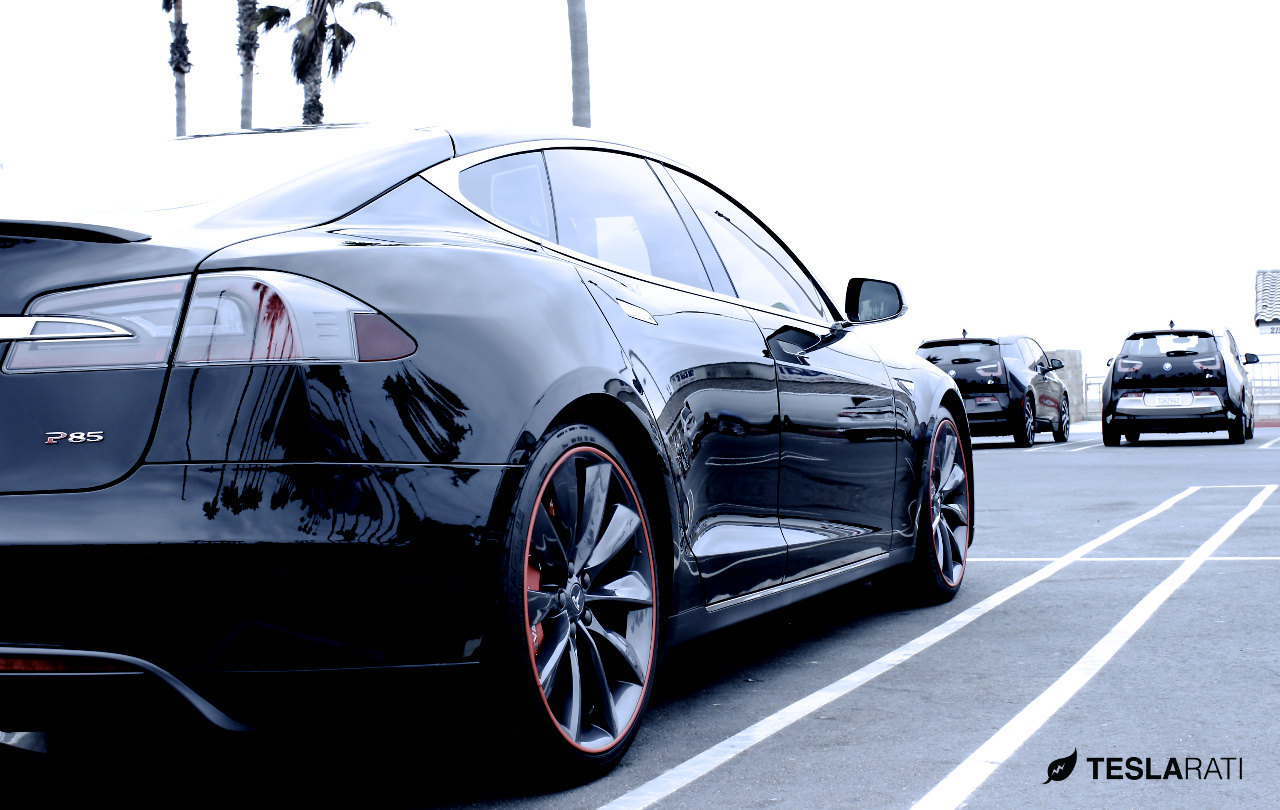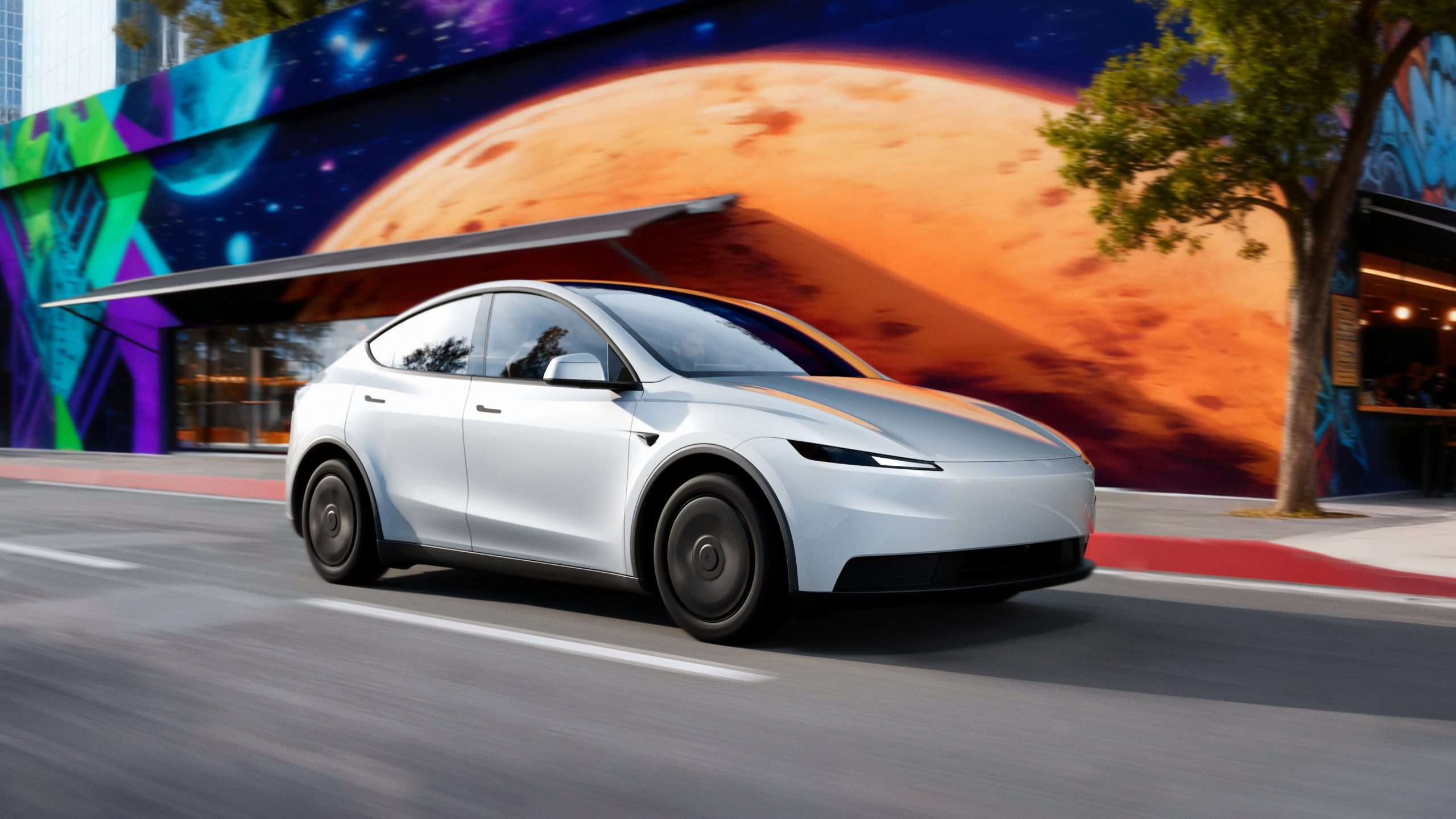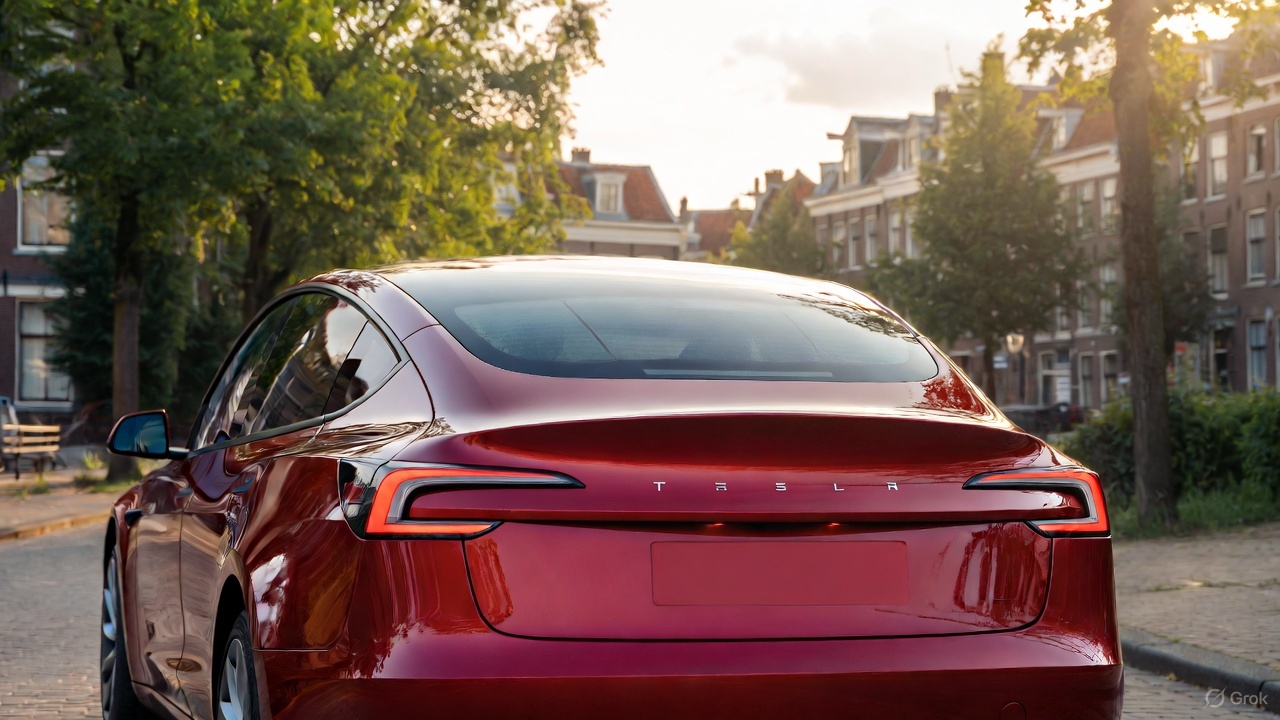News
NHTSA says your Tesla can’t be this quiet starting Sept., 2019

We at Teslarati are all in favor of making vehicles as safe as possible. Indeed, in our research and analysis of Teslas, we were proud early on in 2013 when the National Highway Traffic Safety Administration (NHTSA) awarded the Tesla Model S a 5-star safety rating, not just overall, but in every subcategory without exception. It was so safe, in fact, that the all-electric sedan broke the testing equipment at an independent commercial facility. Fast-forward to 2015. The Model X was the first SUV to be five-star in every category, according to Tesla CEO Elon Musk. It even won the prestigious Golden Steering Wheel (Das Goldene Lenkrad) award for best SUV this year.
Safety is important and should be primary to any driving situation. It should prevail over luxury features, style, and even comfort. However, a new NHTSA regulation that purports to target safety in its language is little more than a superficial gesture within a larger framework of driver, passenger, and pedestrian concerns.
Federal Motor Vehicle Safety Standard No. 141, which will begin on September 1, 2019, requires all newly manufactured hybrid and electric light-duty vehicles to make an audible noise at speeds below 19 mph. The sound requirement has been designed to help pedestrians who are blind, have low vision, cyclists, and other pedestrians to detect the presence, direction, and location of hybrids and EVs traveling at low speeds. At higher speeds, the sound alert will not be required because other factors, such as tire and wind noise, seem to provide adequate audible warning to pedestrians and will not be the subject of this regulation.
“We all depend on our senses to alert us to possible danger,” said U.S. Transportation Secretary Anthony Foxx. “With more, quieter hybrid and electrical cars on the road, the ability for all pedestrians to hear as well as see the cars becomes an important factor of reducing the risk of possible crashes and improving safety.”
Creating a social environment in which all individuals — especially those with disabilities, underrepresented groups, children, and the elderly — are physically and psychologically welcomed and safe is absolutely paramount to a healthy community. Manufacturers and drivers of hybrids and EVs do have a responsibility to contribute to such an environment.
Yet, clearly, we have a generation who has been accustomed to the sounds and smells of internal combustion engines. Wouldn’t driver and pedestrian education be a more efficacious way to ensure that hybrids and EVs do not pose a safety threat? Daniel Kahneman’s (2013) work, Thinking Fast and Slow, suggests that innovative products require a higher degree of learning than existing products. Education to help EV drivers and individuals who do not have personal access to hybrids and EVS, thus, who have not built in conscious mechanisms toward the awareness of hybrids and EVs in traffic, would have longer lasting and more permanent results.
Making the case for educating pedestrians
As the general population increases its awareness of the risks of pollution to both health and the environment, the internal combustion engine has become less desirable. As a result, battery-powered, fuel-cell electric, and hybrid vehicles are technologically viable alternatives to the internal combustion engine. And they’re beginning to take on a significant segment of the U.S. vehicle market.
Essentially, an internal combustion engine works like a cannon. The sound that results is formidable and part of our collective U.S. psyche. It is ingrained in our psychological expectations of what an engine should be. Electric motors, however, make very little noise compared with an internal combustion engine. Research on the safety implications of quiet electric vehicles has mostly focused on pedestrians’ acoustic perception of EVs and suggests that EVs compromise traffic safety. However, Cocran & Krems‘ 2013 research determined that, based on gained individual experience, drivers adjust their evaluation of noise-related hazards. Some statistical observation studies in literature indicate that hybrid or EV drivers intend to be more careful, less risk takers in traffic (Horswill and Coster 2002). Thus, it makes sense to increase the awareness factors for everyone — EV drivers and pedestrians — to create more robust safe traffic situations when EVs are added to the vehicle mix.
Adding to the sound mix
Principles to increase awareness of hybrids and EVs have generally focused on alerts, or sounds that indicate the presence of an EV. Other principles, such as orientation mechanisms, which make it possible to determine where the vehicle is located, roughly how fast it is going, and whether it is moving toward or away from the listener, extend beyond mere white or overt noises.
Education transcends any of these physical additions to a hybrid or EV. Hybrid and EV drivers as well as pedestrians should be exposed to new conceptual thinking about the place of EVs in traffic situations. Alongside the new federal safety standard that requires low speed noise, hybrid and EV automakers can build in specific educational materials to prepare their consumer base for new driving situations, which will continue to add safety awareness. With access to multiple new technologies, drivers could have multimodal educational opportunities.
- Audio systems could provide periodic, random reminders to increase driver awareness of pedestrians and cyclists in slow speed situations.
- Automakers could require that drivers work through a series of interactive online tutorials that accentuate driver understanding of slow speed safety adaptations with hybrids and EVs.
- Traditional print manuals should include dedicated sections that address slow speed driver safety decision making.
- Before-driving checklists should include explicit instruction in slow speed situations and the possibility of pedestrian interactions.
Consumer safety groups can also assume responsibility for educating their constituents about new needs for pedestrian and cyclist awareness.
- Cyclist advocacy organizations can provide seminars to their members during events to increase strategies for hybrid and EV slow speed situations.
- Existing support groups for persons with visual impairment can add workshops about hybrid and EVs to empower them to anticipate potential slow speed traffic situations.
- Minimal training standards for service animals could include special animal recognition of hybrid and EVs.
- Traditional and highly respected elderly advocacy organizations like AARP could provide print and online materials to help a generation who grew up with internal combustion engines to accommodate strategies to recognize hybrids and EVs in traffic.
Yes, adoption and diffusion of new innovations can be a long-term, complicated process. Airbags, child safety features, exhaust gas hazard, seat belts, and driver assist technologies currently provide hybrid and EV drivers with a toolkit of pedestrian safety measures. But we want more than to prevent what NHTSA says is about 2,400 pedestrian injuries each year that occur during low speed hybrid or EV/ pedestrian interactions. We want to create a cultural climate in which a social vehicular knowledge base extends well beyond the internal combustion engine.

Elon Musk
Tesla CEO Elon Musk sends rivals dire warning about Full Self-Driving

Tesla CEO Elon Musk revealed today on the social media platform X that legacy automakers, such as Ford, General Motors, and Stellantis, do not want to license the company’s Full Self-Driving suite, at least not without a long list of their own terms.
“I’ve tried to warn them and even offered to license Tesla FSD, but they don’t want it! Crazy,” Musk said on X. “When legacy auto does occasionally reach out, they tepidly discuss implementing FSD for a tiny program in 5 years with unworkable requirements for Tesla, so pointless.”
I’ve tried to warn them and even offered to license Tesla FSD, but they don’t want it! Crazy …
When legacy auto does occasionally reach out, they tepidly discuss implementing FSD for a tiny program in 5 years with unworkable requirements for Tesla, so pointless. 🤷♂️
🦕 🦕
— Elon Musk (@elonmusk) November 24, 2025
Musk made the remark in response to a note we wrote about earlier today from Melius Research, in which analyst Rob Wertheimer said, “Our point is not that Tesla is at risk, it’s that everybody else is,” in terms of autonomy and self-driving development.
Wertheimer believes there are hundreds of billions of dollars in value headed toward Tesla’s way because of its prowess with FSD.
A few years ago, Musk first remarked that Tesla was in early talks with one legacy automaker regarding licensing Full Self-Driving for its vehicles. Tesla never confirmed which company it was, but given Musk’s ongoing talks with Ford CEO Jim Farley at the time, it seemed the Detroit-based automaker was the likely suspect.
Tesla’s Elon Musk reiterates FSD licensing offer for other automakers
Ford has been perhaps the most aggressive legacy automaker in terms of its EV efforts, but it recently scaled back its electric offensive due to profitability issues and weak demand. It simply was not making enough vehicles, nor selling the volume needed to turn a profit.
Musk truly believes that many of the companies that turn their backs on FSD now will suffer in the future, especially considering the increased chance it could be a parallel to what has happened with EV efforts for many of these companies.
Unfortunately, they got started too late and are now playing catch-up with Tesla, XPeng, BYD, and the other dominating forces in EVs across the globe.
News
Tesla backtracks on strange Nav feature after numerous complaints

Tesla is backtracking on a strange adjustment it made to its in-car Navigation feature after numerous complaints from owners convinced the company to make a change.
Tesla’s in-car Navigation is catered to its vehicles, as it routes Supercharging stops and preps your vehicle for charging with preconditioning. It is also very intuitive, and features other things like weather radar and a detailed map outlining points of interest.
However, a recent change to the Navigation by Tesla did not go unnoticed, and owners were really upset about it.
For trips that required multiple Supercharger stops, Tesla decided to implement a naming change, which did not show the city or state of each charging stop. Instead, it just showed the business where the Supercharger was located, giving many owners an unwelcome surprise.
However, Tesla’s Director of Supercharging, Max de Zegher, admitted the update was a “big mistake on our end,” and made a change that rolled out within 24 hours:
The naming change should have happened at once, instead of in 2 sequential steps. That was a big miss on our end. We do listen to the community and we do course-correct fast. The accelerated fix rolled out last night. The Tesla App is updated and most in-car touchscreens should…
— Max (@MdeZegher) November 20, 2025
The lack of a name for the city where a Supercharging stop would be made caused some confusion for owners in the short term. Some drivers argued that it was more difficult to make stops at some familiar locations that were special to them. Others were not too keen on not knowing where they were going to be along their trip.
Tesla was quick to scramble to resolve this issue, and it did a great job of rolling it out in an expedited manner, as de Zegher said that most in-car touch screens would notice the fix within one day of the change being rolled out.
Additionally, there will be even more improvements in December, as Tesla plans to show the common name/amenity below the site name as well, which will give people a better idea of what to expect when they arrive at a Supercharger.
News
Dutch regulator RDW confirms Tesla FSD February 2026 target
The regulator emphasized that safety, not public pressure, will decide whether FSD receives authorization for use in Europe.

The Dutch vehicle authority RDW responded to Tesla’s recent updates about its efforts to bring Full Self-Driving (Supervised) in Europe, confirming that February 2026 remains the target month for Tesla to demonstrate regulatory compliance.
While acknowledging the tentative schedule with Tesla, the regulator emphasized that safety, not public pressure, will decide whether FSD receives authorization for use in Europe.
RDW confirms 2026 target, warns Feb 2026 timeline is not guaranteed
In its response, which was posted on its official website, the RDW clarified that it does not disclose details about ongoing manufacturer applications due to competitive sensitivity. However, the agency confirmed that both parties have agreed on a February 2026 window during which Tesla is expected to show that FSD (Supervised) can meet required safety and compliance standards. Whether Tesla can satisfy those conditions within the timeline “remains to be seen,” RDW added.
RDW also directly addressed Tesla’s social media request encouraging drivers to contact the regulator to express support. While thanking those who already reached out, RDW asked the public to stop contacting them, noting these messages burden customer-service resources and have no influence on the approval process.
“In the message on X, Tesla calls on Tesla drivers to thank the RDW and to express their enthusiasm about this planning to us by contacting us. We thank everyone who has already done so, and would like to ask everyone not to contact us about this. It takes up unnecessary time for our customer service. Moreover, this will have no influence on whether or not the planning is met,” the RDW wrote.
The RDW shares insights on EU approval requirements
The RDW further outlined how new technology enters the European market when no existing legislation directly covers it. Under EU Regulation 2018/858, a manufacturer may seek an exemption for unregulated features such as advanced driver assistance systems. The process requires a Member State, in this case the Netherlands, to submit a formal request to the European Commission on the manufacturer’s behalf.
Approval then moves to a committee vote. A majority in favor would grant EU-wide authorization, allowing the technology across all Member States. If the vote fails, the exemption is valid only within the Netherlands, and individual countries must decide whether to accept it independently.
Before any exemption request can be filed, Tesla must complete a comprehensive type-approval process with the RDW, including controlled on-road testing. Provided that FSD Supervised passes these regulatory evaluations, the exemption could be submitted for broader EU consideration.








